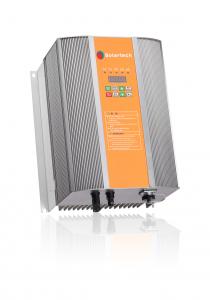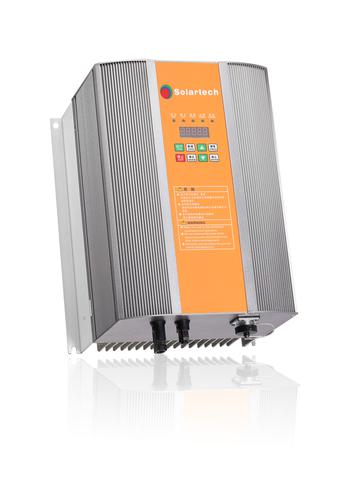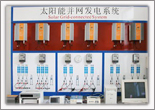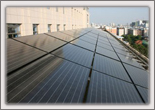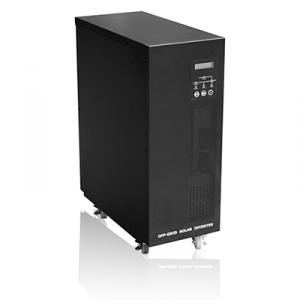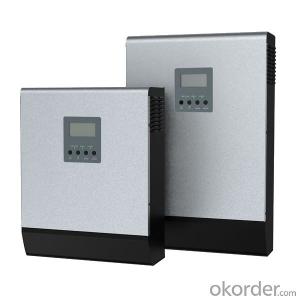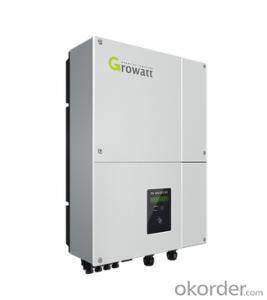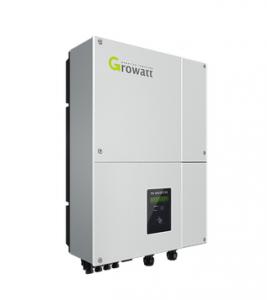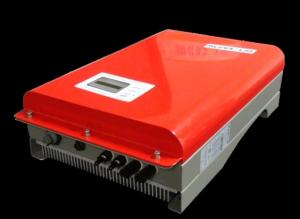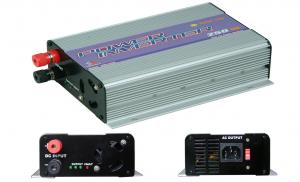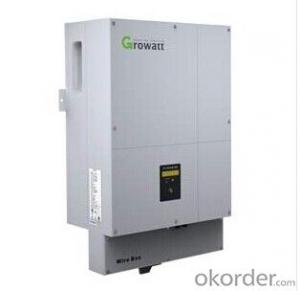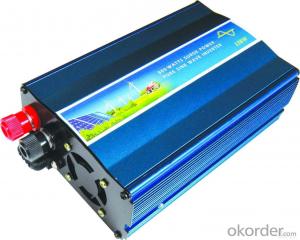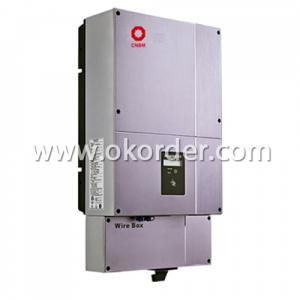Solar Inverter 7.5 Kw - Grid Tied Solar Inverters for Solar On Grid
- Loading Port:
- Shekou
- Payment Terms:
- TT or LC
- Min Order Qty:
- 20 unit
- Supply Capability:
- 800000 unit/month
OKorder Service Pledge
OKorder Financial Service
You Might Also Like
Solar On Grid Inverters, Grid Tied Solar Inverter
Products
Solar On Grid Inverter controls the whole system. Solar Inverters converts the DC current produced by the solar array into AC current, then the Solar On Grid Inverters transfers AC current to the grid, and adjusts the operation point in real-time according to the variation of sunshine to realize the maximum power point tracking (MPPT).
Success Stories
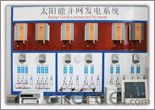
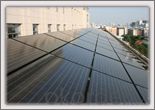
Technical Features
Adopting the dynamic VI MPPT method which has independent intellectual property; fast response and stable operation.A modified anti-islanding detection method can effectively shorten the detection time whilst keeping a high power quality, remove the obstacles to the grid, and suitable for a multi-inverter system.
Digital control with full automatic running, data storage and completely protective function.
Save the daily operating data automatically and consult the operating data for 8 years. It is convenient for statistics and analysis.
Dormancy function, save energy and reduce abrasion.
New design of anodized aluminum case; pretty appearance; perfect cooling and shielding.
Through optimization of the design, On Grid Inverters is adopted with free cooling instead of fans, and then the Solar Home will reduces the maintenance costs.
Light in weight, small in size, flexible installation.
Product Specifications
| Model | GB1000B | GB1500B | GB2000B | GB2500B | GB3000B | GB4000B | GB5000B |
| DC Input | |||||||
| Max. Input Power | 1200 W | 1700W | 2300 W | 2800W | 3400W | 4500W | 5600W |
| Max. Open-Circuit Voltage | 400 V | 450 V | |||||
| Recommended MPP Voltage Range | 160 ~ 320 V | 160 ~ 360 V | |||||
| Max. Input Current | 7A | 8A | 10A | 11A | 12A | 16 A | 20A |
| Reverse Olarity Protection | Yes | ||||||
| Input Current Limit Protection | Yes | ||||||
| AC Output | |||||||
| Rated Output Power | 1000 W | 1500W | 2000 W | 2500W | 3000 W | 4000 W | 5000 W |
| Max. Output Power | 1100 W | 1650W | 2200 W | 2750W | 3300 W | 4400 W | 5500 W |
| Mains Voltage/Frequency | 230 V / 50Hz | ||||||
| Power Factor | >0.99 | ||||||
| Harmonic Distortion of Current | < 4% | ||||||
| Max. Efficiency | 95.00% | 95.00% | 95.20% | 95.20% | 95.30% | 96.10% | 96.20% |
| Efficiency In Europe | 94.10% | 94.10% | 94.40% | 94.40% | 94.50% | 95.20% | 95.40% |
| Anti-Islanding Protection | Yes (with National Patent) | ||||||
| Short Circuit Protection | Yes | ||||||
| Common Data | |||||||
| Isolation | No transformer | ||||||
| Protection Degree | IP52 | ||||||
| Cooling | Free convection cooling | ||||||
| Operating Temperature | -10 ℃ ~ +50 ℃ | ||||||
| Operating Humidity | 0 ~ 95 % | ||||||
| Communication Interface | RS232/RS485 | ||||||
| Dimensions(W*H*D) | 250*310*165mm | 250*310*200mm | 310 * 400 * 235 mm | ||||
| Weight (KG) | 8 | 8 | 9.5 | 9.5 | 10 | 17 | 17.5 |
| Certification | |||||||
| Applicable Safety Standard | EN 50178 | ||||||
| EMC | EN61000-3-2,EN61000-3-3,EN61000-6-1,EN61000-6-3 | ||||||
| Grid Monitoring | UL 1741,IEEE 929,VDE0126-1-1 | ||||||
| Warranty Period | 5 years | ||||||
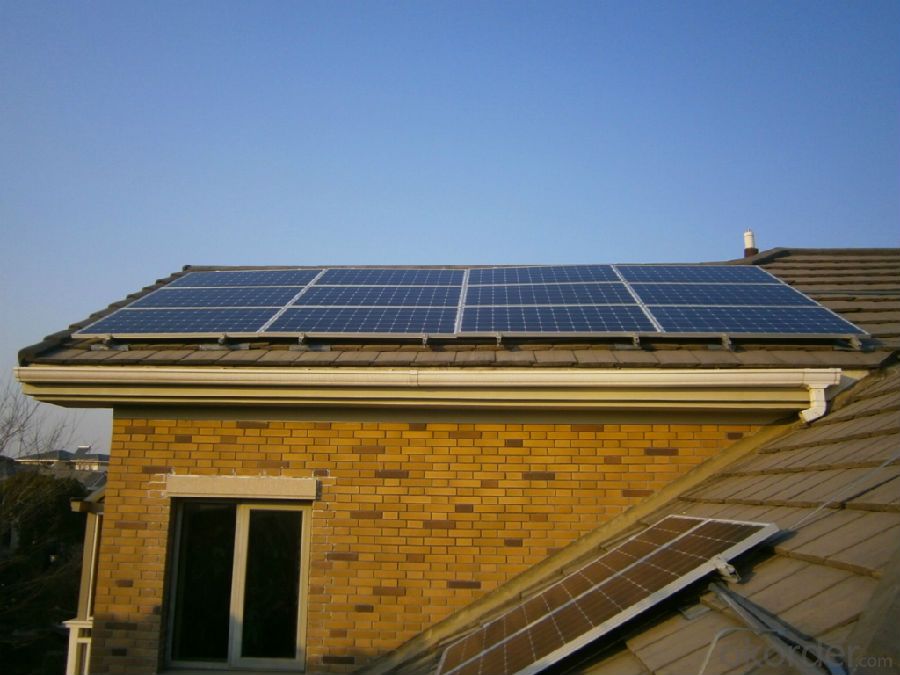

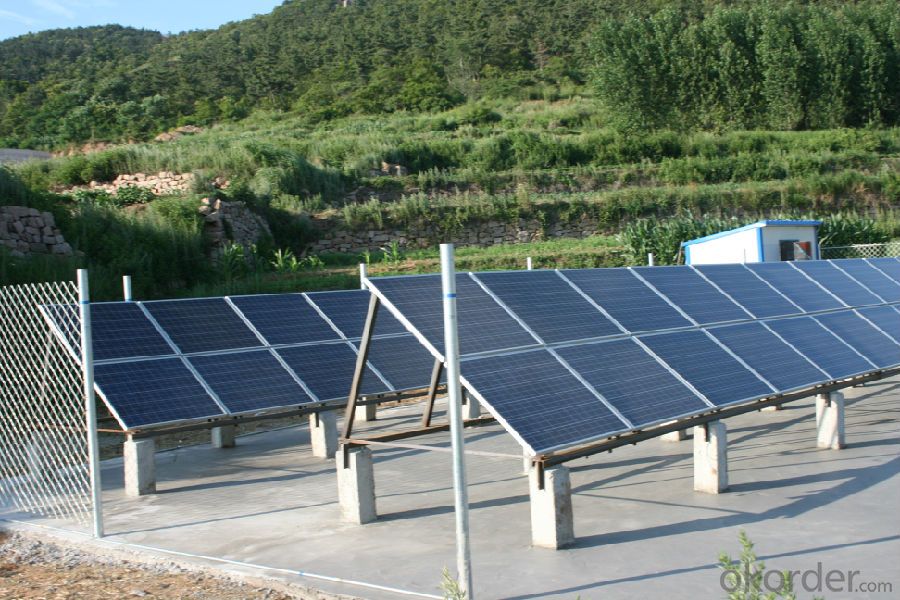
- Q: Can a solar inverter be used in areas with high humidity and salt air exposure?
- Yes, a solar inverter can be used in areas with high humidity and salt air exposure. However, it is important to choose a solar inverter that is specifically designed for such conditions. High humidity can potentially cause corrosion and damage to electronic components, while salt air exposure can lead to accelerated corrosion due to the corrosive nature of salt. Therefore, it is crucial to select an inverter that is made with materials resistant to corrosion, such as stainless steel or coated circuit boards. Additionally, regular maintenance and cleaning of the inverter should be performed to ensure optimal performance and longevity in such environments.
- Q: Can a solar inverter be used with a solar tracker system?
- Yes, a solar inverter can be used with a solar tracker system. A solar inverter is responsible for converting the direct current (DC) produced by solar panels into alternating current (AC) that can be used to power electrical devices. A solar tracker system, on the other hand, is designed to maximize the efficiency of solar panels by orienting them towards the sun throughout the day. By using a solar inverter in conjunction with a solar tracker system, the generated electricity can be efficiently converted and used for various applications.
- Q: What is the role of a power limiter in a solar inverter system?
- The primary function of a power limiter in a solar inverter system is to regulate the amount of power that is supplied to the grid from the solar panels. When the solar panels produce more power than necessary or permitted by the grid, the power limiter serves as a control mechanism to restrict the amount of power injected into the grid. This control mechanism ensures that the power output from the solar panels remains within the specified limits, preventing any overloading or destabilization of the grid. To achieve this, the power limiter continuously monitors the power output from the solar panels and adjusts it accordingly to meet the grid requirements. It achieves this by intelligently controlling the inverter, which converts the direct current (DC) generated by the solar panels into alternating current (AC) suitable for integration with the grid. By limiting the power fed into the grid, the power limiter plays a crucial role in maintaining the stability of the grid. It helps prevent voltage fluctuations, reduces the risk of power surges or blackouts, and ensures compliance with local regulations and grid codes pertaining to solar power generation. Furthermore, the power limiter can offer additional functionalities such as grid synchronization, anti-islanding protection, and remote monitoring. These additional features enhance the safety, reliability, and overall performance of the solar inverter system. In summary, the inclusion of a power limiter in a solar inverter system is essential for maintaining a balance between power generation and grid stability. It optimizes the use of solar energy and ensures the safe and efficient integration of solar power into the electrical grid.
- Q: What are the indicators of a faulty solar inverter?
- Some indicators of a faulty solar inverter may include a complete loss of power generation from the solar panels, flickering or inconsistent power output, unusual noises coming from the inverter, error messages or warning lights displayed on the inverter's screen, and a noticeable decrease in the overall efficiency of the solar system.
- Q: What is the role of a solar inverter in preventing system downtime?
- The role of a solar inverter in preventing system downtime is to convert the direct current (DC) produced by solar panels into alternating current (AC) that can be used to power electrical devices and to feed excess energy back into the grid. By maintaining a stable and reliable flow of electricity, solar inverters help prevent disruptions and downtime in the solar energy system, ensuring continuous operation and maximizing energy efficiency.
- Q: Can a solar inverter be used with solar-powered emergency backup systems?
- Yes, a solar inverter can be used with solar-powered emergency backup systems. The solar inverter is an essential component that converts the DC (direct current) power generated by the solar panels into AC (alternating current) power, which can be used to power various electrical devices and appliances during emergencies.
- Q: What is the role of an MPPT (Maximum Power Point Tracking) inverter?
- The role of an MPPT (Maximum Power Point Tracking) inverter is to optimize the conversion of solar energy into usable electricity. It constantly tracks and adjusts the operating point of the solar panels to ensure that they are always operating at their maximum power point, which maximizes the efficiency and output of the solar system.
- Q: Can a solar inverter be used in systems with different module currents?
- Yes, a solar inverter can be used in systems with different module currents. Solar inverters are designed to convert the DC power produced by the solar panels into AC power for use in the electrical grid or for powering appliances. They typically have a wide range of input voltage and current ratings to accommodate different solar panel configurations. As long as the total power output of the solar panels is within the specifications of the inverter, it can be used in systems with varying module currents.
- Q: Can a solar inverter be used with a solar-powered water heating system?
- Yes, a solar inverter can be used with a solar-powered water heating system. The solar inverter converts the direct current (DC) generated by the solar panels into alternating current (AC) that can be used to power the water heating system. This allows for efficient utilization of solar energy and ensures the water heating system operates effectively.
- Q: Can a solar inverter be used in areas with limited roof space or installation options?
- Indeed, areas with limited roof space or installation options can still make use of a solar inverter. Typically, solar inverters are compact, enabling installation in diverse locations like the ground, walls, or even indoors. Moreover, there are various types of solar inverters accessible, such as microinverters and power optimizers, which offer greater flexibility in system design and installation. By utilizing these alternatives, available space can be maximized, and more installation options can be provided for areas with restricted roof space.
Send your message to us
Solar Inverter 7.5 Kw - Grid Tied Solar Inverters for Solar On Grid
- Loading Port:
- Shekou
- Payment Terms:
- TT or LC
- Min Order Qty:
- 20 unit
- Supply Capability:
- 800000 unit/month
OKorder Service Pledge
OKorder Financial Service
Similar products
Hot products
Hot Searches
Related keywords
